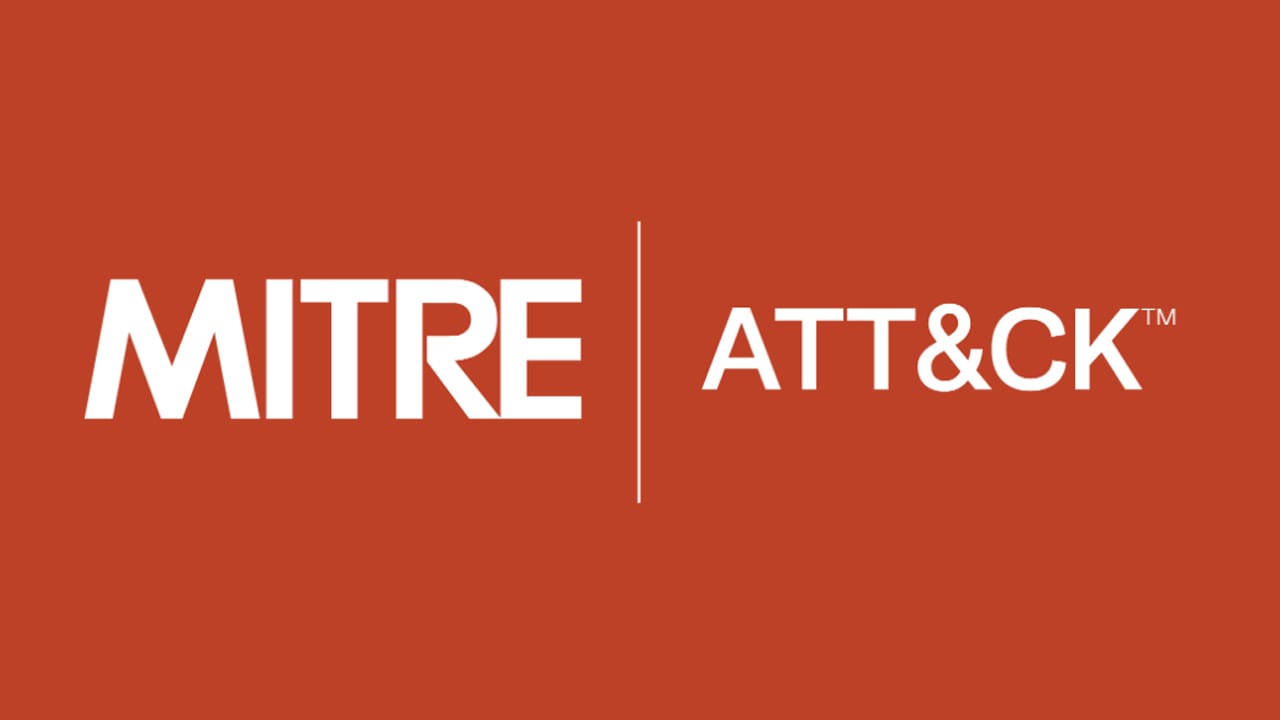What Is the MITRE ATT&CK Framework

The MITRE ATT&CK framework is a comprehensive tool for understanding, detecting, and responding to cyberattacks. It provides a structured approach for identifying and categorizing the stages and methods of an attack and the specific tools and tactics used. Frequently, this information can be used to improve defensive strategies and response plans.
It is essential to understand that the framework is divided into three main sections: Pre-ATT&CK, ATT&CK, and Post-ATT&CK. Each section contains a detailed description of the various stages of an attack and specific mitigation techniques. The ATT&CK section also includes a matrix that you can use to map the tools and tactics of an attacker to the corresponding stage of an attack. This mapping can provide an improved understanding of the enemy's objectives, allowing you to develop more effective countermeasures.
Now that we understand the MITRE ATT&CK framework, it's vital to learn its components. The following are the basic components of the ATT&CK behavioral model:
- During an assault, tactics indicating short-term, tactical adversary objectives (the columns);
- Tactics describing how to prevent a variety of actions from occurring;
- Techniques and other metadata observed in use by the adversary.
The Past and the Present
In 2013, the MITRE Corporation's Cybersecurity Division formed the ASSESS team to research ways to improve post-compromise detection of threat actor behavior. The move was in response to the lack of ability for defenders to know if they had been compromised and what tools and techniques were used against them. The team's primary focus was on creating and validating detection methods through experimentation and analysis that would reduce false positives and increase confidence in detections.
In 2015, the team published their findings in the "Detection Coverage of Adversary Emulation Techniques" report, which outlined their ATT&CK framework. The report has since been continually updated with new techniques and information and is now widely used by cybersecurity professionals and academia alike.
MITRE ATT&CK contains three iterations:
|
Enterprise ATT&CK |
Mobile ATT&CK |
ICS ATT&CK |
|
This program teaches you the skills needed to preserve your system and data from threats encountered in a Windows, Mac, Linux, or Cloud environment. |
This topic is concerned with iOS and Android operating systems' hostile behaviors. |
This type of program is only feasible if the adversary has access to your ICS network and can execute malicious actions. |
Based on its design, the MITRE ATT&CK has become a utility used by security professionals in various areas, such as threat hunting, intrusion detection, security engineering, red teaming, threat intelligence, and risk control.
So, what information does the MITRE ATT&CK matrix reveal?
The MITRE ATT&CK Matrix, What Does It Reveal
The MITRE ATT&CK matrix categorizes adversary techniques and their goals. The objectives are split into tactics in the ATT&CK Matrix and then presented straight from beginning to end, starting with a survey at the top and ending with exfiltration at the bottom.
The following types of threats are classified under the broadest version of ATT&CK for Enterprise, which covers Linux, Office 365, Azure AD, PRE, macOS, Google Workspace, Windows, IaaS, SaaS, Containers, and Networking:
- Persistence: The adversary constantly attempts to strengthen its position and alter configurations to maintain its foothold.
- Reconnaissance: Obtaining information about the target organization to prepare for future adversary assaults, such as knowledge of the target organization, is a typical technique used by attackers.
- Execution: attempting to execute a harmful code, i.e., executing a remote access tool.
- Initial Access: attempting to access your network, such as spear phishing.
- Defense Evasion: Attempting to hide from detection, that is, using secure procedures to cover malware.
- Resource Development: To protect ourselves and exploit vulnerabilities, we need to have capabilities that extend across all areas of operations. This is when preparing for future activities, such as exploitation and maintenance, begins.
- Privilege Escalation: Trying to get higher-level permissions, such as exploiting a vulnerability to gain access.
- Lateral Movement: You can navigate through your environment and, for example, access different systems by utilizing real credentials.
- Command and Control: Impersonating an authorized user on a hacked system to control it, for example, imitating regular web traffic to communicate with a victim network.
- Credential Access: i.e., using keylogging, a method of gathering personal information from computers that uses log files and other sources to record keystrokes.
- Discovery: trying to figure out your surroundings, i.e., determining what they have power over.
- Impact: Encrypting data with ransomware allows attackers to execute, interrupt, modify, or destroy systems and data.
- Collection: This entails gaining access to data of use to the adversary, such as cloud storage.
- Exfiltration: Data theft, which transfers data to a cloud account.
Each MITRE ATT&CK tactic column contains an adversary technique, which depicts the adversary's actual behavior. In addition, some techniques have sub-techniques that further detail how an attacker performs a certain method.
What Are Some Benefits of The MITRE ATT&CK Matrix?
The MITRE ATT&CK framework can assist a company in several ways. The following are some of the advantages of adopting MITRE ATT&CK:
- Behavioral Analytics Development: Anomaly analysis aims to link different incidents together and monitor the adversary's activity. ATT&CK may be used to make analyzing negative behavior patterns easier.
- Red Teaming: The adversary is used to demonstrate the effect of a breach. ATT&CK may be utilized to develop red team plans and arrange operations.
- Adversary Emulation: An adversary emulation technique is a penetration test that simulates an attack against your assets while assessing their security. ATT&CK can be used to develop adversarial emulation situations to examine and verify security defenses.
- SOC Maturity Assessment: Cybersecurity incidents are a natural consequence of our increasingly digital world, and information security professionals need to be able to detect them rapidly. However, the ATT&CK framework may evaluate how effectively a security operations center (SOC) detects, analyzes, and responds to breaches, much like the Defensive Gap Assessment.
- Defensive Gap Assessment: Defines the organization's security flaws in various departments. Before purchasing new tools, ATT&CK may be used to analyze present ones and test new ones to assess security coverage and prioritize investment.
- Cyber Threat Intelligence Enrichment: Enhances threat information. ATT&CK enables security experts to determine whether they can defend against certain Advanced Persistent Threats (ATP) and general tactics used by multiple threat actors.
The most popular methods for MITRE ATT&CK include manual mapping and integration with cybersecurity tools such as Endpoint Detection and Response (EDR), Security Information and Event Management (SIEM), and Cloud Access Security Broker (CASB).
When using a SIEM with the framework to scan for attacks, the endpoint, network, and cloud service data are combined to detect threats and connect them to MITRE ATT&CK. Additionally, when utilizing the security solution, changes in security posture are made by changing the security tools that provide log data (for example, EDR or CASB).
The event mapping capability of the endpoint agent allows defenders to identify the phases of a threat event, prioritize responses, and analyze risk using MITRE ATT&CK with EDR.
Who Uses MITRE ATT&CK And Why?
MITRE's ATT&CK framework has become the de-facto standard for characterizing cyber adversary behavior. Cybersecurity practitioners use the framework to understand better and anticipate the tactics, techniques, and procedures (TTPs) used by adversaries. It is also increasingly being used by government agencies and the private sector to inform their threat intelligence and incident response efforts.
Ultimately, MITRE ATT&CK is a valuable resource for both defenders and attackers. It provides a common language for discussing cyber threats and a shared understanding of adversary behavior for defenders, enabling better information sharing and collaboration among different organizations. In addition, it can map out an organization's defenses and identify potential weaknesses for attackers. Ultimately, MITRE ATT&CK is helping to make the cybersecurity landscape more predictable and manageable.
Conclusion
The TTPs, tactics, techniques, and procedures of real-world adversarial groups are documented in ATT&CK. The knowledge is comprehensive and cross-referenced. The framework also contains information on malicious activities, including the genuine and fraudulent computer programs and tools used in assaults (both good and bad) to assist them in their attacks.
Since MITRE ATT&CK is meant for both an attacker and other defender-focused and risk-based threat modeling and cyberattack lifecycle models, the framework is a one-of-a-kind tool for providing businesses with knowledge about adversary methods to strengthen their security measures.
Finally, the amount of data ATT&CK offers is impossible to comprehend in our single blog article. Set aside some time to discover more about the tool, and you'll come to appreciate its full meaning. You can contact us for more information about the framework and how it can be useful for your organizations.

